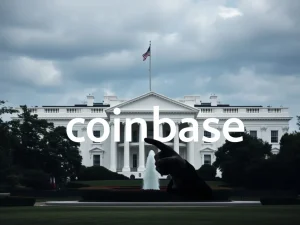Federal Reserve Announces Dramatic Shift in Bank Crypto Guidance

In a move signaling a notable shift in its approach, the Federal Reserve has announced the withdrawal of its specific supervisory guidance for banks engaging in cryptocurrency activities. This decision, made public on April 24th, means banks will no longer need to provide advance notification for planned or ongoing crypto-asset operations as previously required. For anyone following the intersection of traditional finance and digital assets, this regulatory adjustment is significant.
What Was the Previous Crypto Guidance for Banks?
Previously, the Federal Reserve had established specific expectations for state member banks interested in or already involved with crypto assets. This included a 2022 supervisory letter that required banks to notify the Fed in advance of any planned or current crypto-asset activities. The intention was likely to allow regulators to monitor and assess potential risks associated with these novel activities before they became widespread.
Furthermore, a separate 2023 supervisory letter provided guidance specifically on how state banks could engage with stablecoins. These rules addressed potential risks and supervisory expectations related to issuing, holding, or transacting in stablecoins. The withdrawal of both these specific letters indicates a change in how the central bank intends to oversee these operations moving forward.
How Will Crypto Regulation Work Now?
With the withdrawal of the specific guidance, the Federal Reserve states that it will now monitor any crypto-related activities through its ‘normal supervisory process.’ This means that instead of having dedicated, explicit rules or notification requirements solely for crypto, bank engagement with digital assets will be assessed under the existing framework used for overseeing all other banking activities. This shift suggests that the Fed may be moving towards integrating crypto asset supervision into its broader regulatory toolkit rather than treating it as a distinct, separate category requiring unique rules.
For banks, this could mean a few things:
- Less explicit hurdles for exploring crypto activities, as the advance notification requirement is gone.
- Increased reliance on interpreting how existing banking regulations apply to crypto assets.
- Potential for supervision to vary more depending on the specific nature of the crypto activity and the bank’s overall risk profile.
This change doesn’t mean a lack of oversight; it simply means the oversight mechanism has changed. Banks will still need to demonstrate they can manage the risks associated with crypto assets under the Fed’s general safety and soundness standards.
Implications for Banks and Stablecoins
The rescinding of the stablecoin guidance is particularly noteworthy given the ongoing discussions around stablecoin regulation in the U.S. While legislative efforts continue, the Fed’s decision to remove its specific supervisory letter suggests that its approach to stablecoins within the banking system will also revert to the standard supervisory framework. Banks dealing with stablecoins will need to ensure compliance with general regulations concerning reserves, liquidity, and risk management.
This move could potentially streamline the process for banks looking to engage with digital assets, but it also places a greater onus on the banks themselves to understand and apply existing regulations to these new technologies. The success of this approach will depend heavily on the clarity provided by the Fed through its normal supervisory interactions and examinations.
The Future of US Crypto Regulation
This decision by the Federal Reserve is a key development in the evolving landscape of US crypto regulation. It signals a potential maturation in how regulators view crypto assets – moving from requiring specific, upfront notification to incorporating them into existing risk assessment processes. While the immediate impact on the market remains to be seen, it suggests a path towards integrating digital asset supervision within traditional financial oversight mechanisms.
The lack of dedicated guidance might be interpreted by some as a positive step towards normalization, while others might view it as potentially creating ambiguity compared to having explicit rules. As this story develops, the industry will be watching closely to understand how the Fed’s ‘normal supervisory process’ will specifically address the unique challenges and risks posed by crypto assets and stablecoins.
Summary: A New Chapter for Banks and Crypto
In conclusion, the Federal Reserve’s decision to withdraw its specific crypto and stablecoin guidance marks a significant shift. By moving oversight to its normal supervisory process, the Fed is signaling a change in how it intends to regulate banks’ engagement with digital assets. While the need for sound risk management remains paramount, this change removes specific notification requirements and integrates crypto into the broader banking oversight framework. The implications for banks exploring or expanding their crypto services, particularly regarding stablecoins, will unfold as the industry navigates this new regulatory approach.








